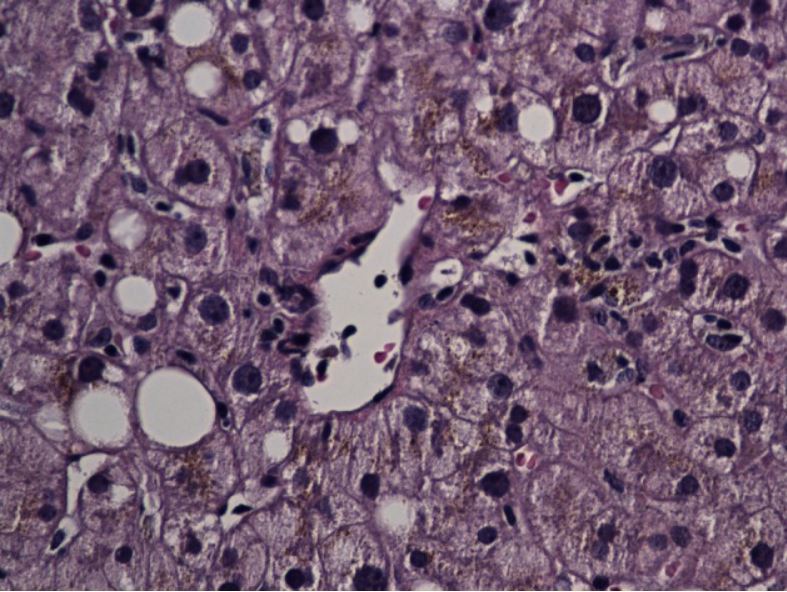Playlist
Show Playlist
Hide Playlist
Drug-Induced Liver Disease & Acetaminophen Toxicity
-
Slides GD liver disease.pdf
-
Download Lecture Overview
00:01 Drug Induced Liver Disease In pharmacology, you have learned a huge list of those drugs that are Hepato toxic You've also learned about those drugs that inhibit or stimulate cytochrome P450 5% of all adverse drug reactions are actually hepatic. 00:20 Do you see what that statement says? 5% of all adverse drug reactions are hepato toxic. 00:29 liver function tests becomes extremely important for you. 00:32 accounts for 20 to 30% of fulminant liver failure. 00:36 This is no joke. 00:37 And once I get past the general introduction, of drug induced liver disease, I will focus upon Acetaminophen and make sure that you are absolutely clear about how severe and dangerous this is. 00:49 Reactions can be dose-dependent and/or Idiosyncratic And the problem is the fact is, often times, when the drugs have been taken The patient might not even present with symptoms and that is scary You really need to make sure that you take a proper history Psychological evaluation is absolutely important or psychiatric evaluation We will talk about that in a second. 01:09 Injury resolves with removal of offending drug The problem with that is the fact that when you remove the offending drug, because it might caused so much damage to your liver, What's the repair process called? The repair process is called fibrosis. 01:23 So you might actually have an increased amount of fibrosis. 01:26 depositing the liver, ugh, and might actually look rather Cirrhotic. 01:33 Transplantation for fulminant liver failure. 01:38 Let's have a look at acetaminophen toxicity. 01:42 In adult toxic dose of greater than 4,000 milligrams every 24 hours, though much less in alcoholics. 01:52 However, let me ask you a question. 01:53 If you're an alcoholic, do you think that you are chronic or an acute alcohol consumer? An alcoholic, chronic? Interesting. 02:03 So then if you're a chronic alcoholic or even consuming alcohol chronically. 02:08 What can affect will that have on your cytochrome P450 system? It induces it, does it not? So now let's say that you're consuming acetaminophen and you also are alcoholic. 02:22 There's a particular CYP450, called CYP2E1, specifically, once again I repeat CYP2E1. 02:30 Then, well then be induced and metabolized your acetaminophen into NAPQI. 02:36 Of course that NAPQI is the metabolite that is incredibly toxic to the liver. 02:41 Acetaminophen toxicity is considered to be one of the most common causes of acute liver failure. 02:49 In fact, half of the cases of ALF or acute liver failure is due to acetaminophen toxicity. 02:54 You would expect to find elevated levels of ALT and AST. 02:59 Either resolve without sequelae or result in death/liver transplantation perhaps. 03:04 Remember that the management of acute toxic ingestion of acetaminophen would be n-acetylcysteine. 03:10 If you review your biochemistry real quick, remember that you'd be forming your NAPQI and as long as your proper levels of reduced glutathione. 03:18 Then you will then have the glutathione peroxidase that you can neutralize a free radicals. 03:24 However, in acute toxic ingestion, you've now depleted the levels of reduced glutathione. 03:29 So therefore the treatment concept would be to replenish the antioxidant and that's what an n-acetylcysteine would do. 03:39 It would then help you form your reduced glutathione so that hopefully, hopefully, you'd be able to perhaps manage some of that NAPQI.
About the Lecture
The lecture Drug-Induced Liver Disease & Acetaminophen Toxicity by Carlo Raj, MD is from the course Liver Diseases: Basic Principles with Carlo Raj.
Included Quiz Questions
Which of the following is considered the toxic dose for acetaminophen?
- More than 4 g/day
- More than 3 g/day
- More than 2 g/day
- More than 5 g/day
- More than 6 g/day
Which of the following zones is primarily affected in acetaminophen overdose?
- Zone 3
- Zone 2
- Zone 1
- Zone 4
- Central vein
Which cytochrome p450 is involved in acetaminophen toxicity?
- CYP2E1
- CYP A3
- CYP B
- CYP C
- CYPB6
Customer reviews
2,0 of 5 stars
| 5 Stars |
|
0 |
| 4 Stars |
|
0 |
| 3 Stars |
|
0 |
| 2 Stars |
|
1 |
| 1 Star |
|
0 |
It would have been great to list the most common agents that could potentially lead to liver toxicity aside from paracetamol, incl phenytoin, statins, amiodarone, methotrexate. Also not sure if this would be discussed in the Emergency Medicine talks but actually working up the patient and what to do from a monitoring point of view once a diagnosis of paracetamol overdose would have been really helpful. It would have been worth noting that acetylcysteine most efficacious within 8 to 10 hours after ingestion of paracetamol.





